Themed collection Nanoplasmonics

Nanoplasmonics
Guest editors Luis Liz-Marzán, Catherine Murphy and Jianfang Wang introduce the Nanoplasmonics themed issue of Chemical Society Reviews.

Chem. Soc. Rev., 2014,43, 3820-3822
https://doi.org/10.1039/C4CS90026J
Optical absorption and scattering spectroscopies of single nano-objects
This review focuses on optical detection and spectroscopy of single nano-objects for nanophysics investigation.
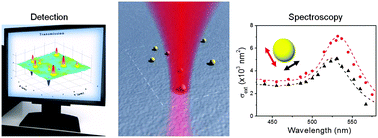
Chem. Soc. Rev., 2014,43, 3921-3956
https://doi.org/10.1039/C3CS60367A
Self-assembled plasmonic nanostructures
This review highlights recent advances in the field of self-assembled plasmonic nanostructures, their optical properties and applications.

Chem. Soc. Rev., 2014,43, 3976-3991
https://doi.org/10.1039/C3CS60341E
New materials for tunable plasmonic colloidal nanocrystals
We present a review on the emerging materials for novel plasmonic colloidal nanocrystals.

Chem. Soc. Rev., 2014,43, 3957-3975
https://doi.org/10.1039/C3CS60265F
Mapping plasmons at the nanometer scale in an electron microscope
EELS and cathodoluminescence are highly relevant tools to map plasmons within metallic nanoparticles much smaller than the wavelength of light.
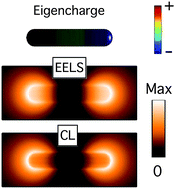
Chem. Soc. Rev., 2014,43, 3865-3883
https://doi.org/10.1039/C3CS60478K
Heavily-doped colloidal semiconductor and metal oxide nanocrystals: an emerging new class of plasmonic nanomaterials
A new class of plasmonic nanomaterials, based upon heavily-doped semiconductors and metal oxides, is rapidly developing and showing great promise for biomedical and optoelectronic applications.
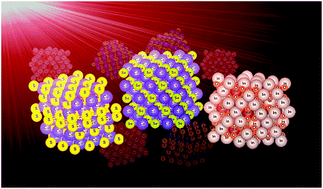
Chem. Soc. Rev., 2014,43, 3908-3920
https://doi.org/10.1039/C3CS60417A
Nanoplasmonics for chemistry
We discuss how nanoplasmonics can benefit chemistry and review the most recent developments in this new and fast growing field of research.
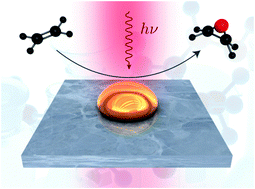
Chem. Soc. Rev., 2014,43, 3898-3907
https://doi.org/10.1039/C3CS60364D
Probing subdiffraction limit separations with plasmon coupling microscopy: concepts and applications
This Tutorial Review introduces the concept of distance dependent plasmon coupling and its application in biosensing and imaging.
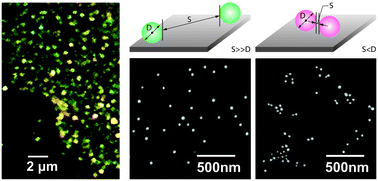
Chem. Soc. Rev., 2014,43, 3884-3897
https://doi.org/10.1039/C3CS60340G
Engineering plasmonic metal colloids through composition and structural design
This Tutorial Review examines the effects of composition, particle size and shape, overall architecture, and local environment on the optical properties of metal colloids.
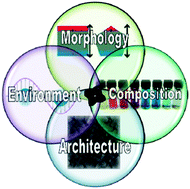
Chem. Soc. Rev., 2014,43, 3823-3834
https://doi.org/10.1039/C3CS60347D
Plasmonic nanomaterials for biodiagnostics
We discuss plasmonic nanomaterials as biodiagnostic tools, and how their properties yield tunable optical signals and surface enhanced Raman signals.
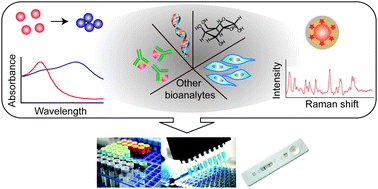
Chem. Soc. Rev., 2014,43, 3835-3853
https://doi.org/10.1039/C3CS60346F
Super-resolution imaging of SERS hot spots
Super-resolution imaging defeats the diffraction-limit of light, allowing the spatial origin and intensity of SERS signals to be determined with <5 nm resolution.
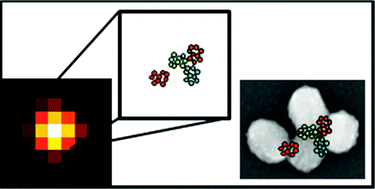
Chem. Soc. Rev., 2014,43, 3854-3864
https://doi.org/10.1039/C3CS60334B
About this collection
Nanoplasmonics concerns light-matter interactions with nanoscale materials. This Chemical Society Reviews themed issue, guest edited by Luis Liz-Marzan, Catherine Murphy and Jianfang Wang, covers all chemical aspects of the field, from synthesis and fabrication to plasmon-enhanced effects in physical and biological systems.